Efficient Appliance
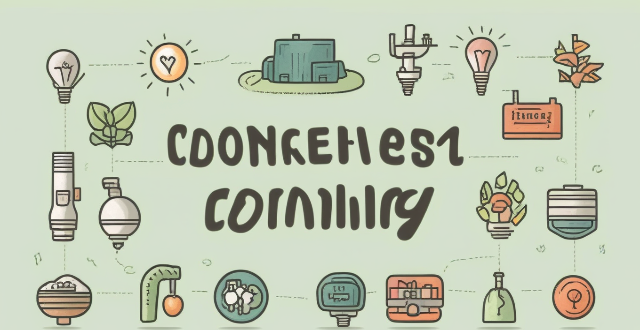
What is the relationship between energy-efficient appliances and overall energy savings ?
The text discusses the connection between energy-efficient appliances and overall energy savings, defining such appliances as those engineered to meet specific efficiency standards. These devices reduce direct energy consumption through lower power requirements and advanced technology, leading to long-term cost benefits and environmental advantages like reduced greenhouse gas emissions. To maximize savings, consumers should research and maintain these appliances properly and replace older models. The relationship underscores the importance of energy-efficient appliances in achieving energy savings for a more sustainable future.

What impact do energy-efficient appliances have on reducing electricity bills ?
Energy-efficient appliances can significantly reduce electricity bills by using less energy and incorporating smart features. These appliances may have higher upfront costs, but the long-term cost savings often outweigh the initial investment. Additionally, energy-efficient appliances contribute to a smaller carbon footprint and conserve energy resources, promoting sustainability. Overall, these appliances offer financial and environmental benefits for conscious consumers.
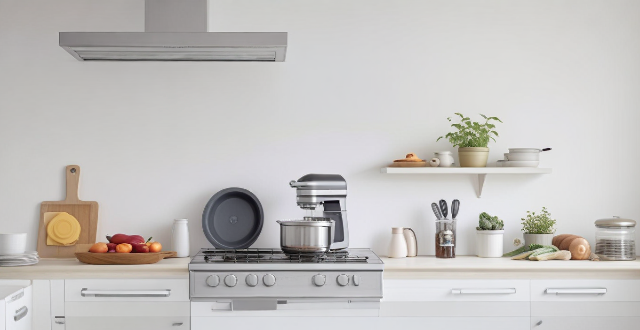
How can I save energy with appliance usage at home ?
The provided text offers energy-saving tips for various home appliances, including refrigerators, dishwashers, washing machines, dryers, ovens and cooktops, lighting, and thermostats. It suggests setting the fridge temperature correctly, defrosting it regularly, and keeping it full but not overstuffed. For dishwashers, it recommends running full loads and using the energy-saving setting. Washing machines should be used with cold water and the appropriate wash cycle. Dryers should have a clean lint filter after each use and dry similar fabrics together. Smaller appliances should be used for small meals when cooking, and the oven door should remain closed. LED bulbs should replace traditional incandescent bulbs, and lights should be turned off when not in use. A programmable thermostat should be used to set specific temperatures for different times of the day, and the temperature should be lowered in winter and raised in summer. Following these tips can significantly reduce home energy consumption, save money on utility bills, and contribute to a more sustainable environment.

How do energy-efficient appliances help decrease carbon footprints ?
Energy-efficient appliances contribute to a smaller carbon footprint by reducing energy consumption, improving efficiency, and having a longer lifespan. Government incentives encourage the adoption of these eco-friendly options, leading to lower energy bills, increased comfort, environmental sustainability, reduced maintenance costs, and enhanced property value. Examples of energy-efficient appliances include refrigerators, washing machines, air conditioners, light bulbs, and water heaters. By choosing energy-efficient appliances, we can all contribute to a greener planet and a healthier future for generations to come.

How can I use kitchen appliances to save time while cooking ?
Using kitchen appliances like food processors, slow cookUsing kitchen appliances like food processors, slow cookers, rice cookers, slow cookers, electric pressure cookers, rice cookers, and stand mixers can significantly save time in meal preparation. These appliances offer features such as chopping, grinding, making dough, cooking at different heat settings, and precise mixing, allowing for efficient and convenient cooking experiences.

How can I make my home more energy-efficient ?
Making your home more energy-efficient can reduce your carbon footprint, save money on utility bills, and improve the comfort of your living space. To achieve this, consider proper insulation, improving window and door performance, optimizing heating and cooling systems, using energy-efficient appliances and electronics, and switching to energy-efficient lighting options. By implementing these strategies, you can enjoy the benefits of a more sustainable future.

What are some ways to organize my kitchen to make cooking more efficient ?
Organizing your kitchen can greatly enhance the cooking experience by making it more efficient and enjoyable. Here are some strategies to consider: 1. Zone Cooking Areas 2. Declutter Regularly 3. Smart Storage Solutions 4. Group Like Items Together 5. Maximize Fridge and Freezer Space 6. Keep a Clean Sink 7. Lighting and Safety
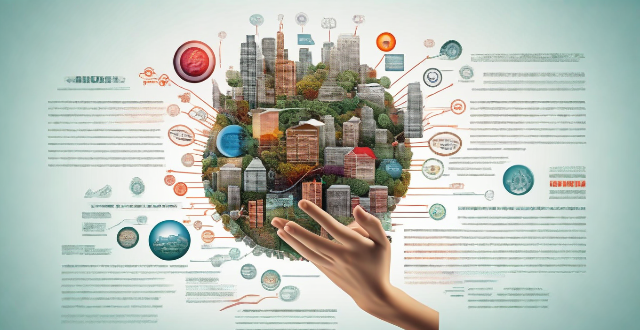
How does resource-efficient utilization contribute to sustainable development ?
Resource-efficient utilization is key to sustainable development, conserving resources, reducing waste, and promoting economic growth. It helps mitigate environmental impact, provides economic benefits, and enhances social well-being. As we face global challenges like climate change and resource scarcity, adopting resource-efficient practices is crucial for a sustainable future.
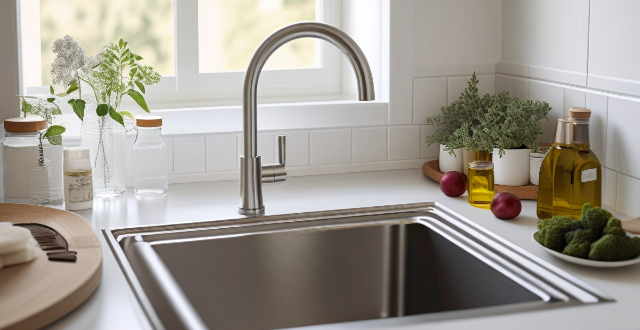
What is the best way to clean and maintain stainless steel kitchen appliances ?
Stainless steel kitchen appliances require proper cleaning and maintenance to keep them looking their best. To clean them, gather materials such as a microfiber cloth, mild dish soap, water, white vinegar, baking soda, and olive or mineral oil for polishing. The cleaning process involves removing grease and stains with a damp cloth, rinsing and drying the surface, removing stubborn stains with a baking soda paste, and polishing the surface with oil. In addition to regular cleaning, maintenance tips include avoiding harsh chemicals and abrasive cleaners, using a gentle touch when cleaning, keeping appliances away from direct sunlight and heat sources, and using protective covers when not in use.
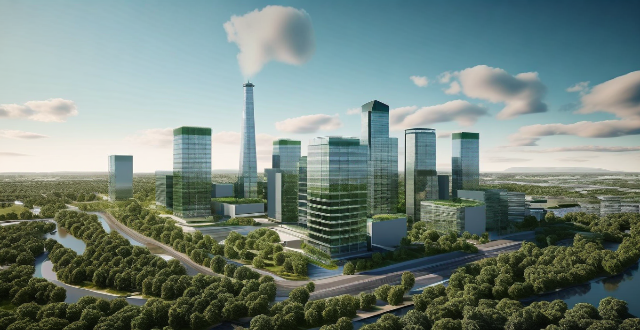
How do energy-efficient buildings contribute to sustainability ?
Energy-efficient buildings contribute to sustainability by reducing energy consumption, decreasing greenhouse gas emissions, and conserving natural resources. These buildings use less energy for heating, cooling, and lighting, resulting in lower energy bills and reduced carbon footprints. They also incorporate features like improved ventilation systems and water-saving technologies to improve air quality and conserve water resources. By using renewable materials and minimizing waste, these buildings help conserve natural resources and reduce landfill waste. Overall, energy-efficient buildings play a crucial role in achieving sustainability and protecting our planet for future generations.

How do energy-efficient buildings reduce carbon footprint ?
Energy-efficient buildings are crucial for reducing carbon footprint by minimizing energy use and optimizing resources. They incorporate features like proper insulation, air tightness, advanced HVAC systems, renewable energy sources, and smart technology to reduce energy consumption, lower greenhouse gas emissions, and mitigate climate change impact. These structures offer benefits such as lower utility bills, increased comfort, reduced maintenance costs, and higher resale value. Energy-efficient buildings play a significant role in combating climate change and promoting a sustainable future.
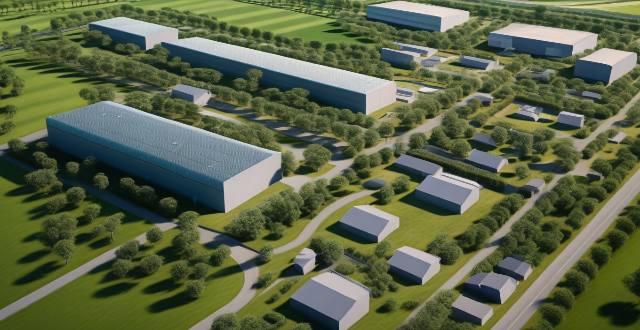
What are the benefits of energy-efficient lighting systems ?
Energy-efficient lighting systems offer multiple benefits, including reducing energy consumption and positively impacting the environment, economy, and overall well-being. They help lower greenhouse gas emissions and promote sustainability by lasting longer and using recyclable materials. Economically, these systems reduce energy costs and require fewer replacements over time, making them cost-effective. They also provide better visual comfort, reducing eye strain and increasing productivity, while producing less heat for a more comfortable environment. Upgrading to energy-efficient lighting systems contributes to a more sustainable future for all.

Can energy-efficient lighting systems be used in commercial buildings as well as residential homes ?
Energy-efficient lighting systems offer significant energy savings, reduced maintenance costs, and environmental benefits. LED, CFL, and halogen lighting are common types of energy-efficient lighting systems that can be used in both commercial buildings and residential homes. By choosing an energy-efficient lighting system, users can contribute to a more sustainable future while also saving money on utility bills.

How do climate zones impact the design of energy-efficient buildings ?
Climate zones play a crucial role in the design of energy-efficient buildings, impacting heating and cooling needs, insulation and ventilation, orientation and shading, glazing and daylighting, and roofing and water management. By taking these factors into account, architects and engineers can create buildings that are both comfortable and energy-efficient regardless of their location within different climate zones.

What are the most common features of energy-efficient buildings ?
Energy-efficient buildings are designed to reduce energy consumption and minimize their impact on the environment. Some of the most common features of these buildings include insulation, energy-efficient windows, solar panels, energy-efficient lighting, high-efficiency HVAC systems, rainwater harvesting systems, green roofs and walls, energy monitoring systems, energy-efficient appliances, and natural ventilation. These features can significantly lower heating and cooling costs, reduce the demand for municipal water supplies, and improve indoor air quality.

Are there any government incentives for installing energy-efficient lighting systems ?
Governments worldwide are offering incentives to encourage the installation of energy-efficient lighting systems. These incentives include tax credits, rebates, grants, and subsidies aimed at reducing energy consumption, lowering greenhouse gas emissions, and promoting sustainable development. Types of government incentives for energy-efficient lighting systems include: 1. Tax Credits: Allow businesses and individuals to deduct a portion of the cost of installing energy-efficient lighting from their taxable income. 2. Rebates: Provide a direct payment to businesses or individuals who install energy-efficient lighting systems. 3. Grants: Financial awards given to support the installation of energy-efficient lighting systems without requiring any initial investment from the recipient. 4. Subsidies: Financial assistance provided by governments to make energy-efficient lighting systems more affordable through mechanisms like low-interest loans and interest rate subsidies. Benefits of energy-efficient lighting systems include significant energy savings, reduced environmental impact, and long-term cost savings. Despite the higher initial cost compared to traditional lighting systems, the reduced energy consumption and maintenance costs can offset the investment over time, making these systems a wise financial decision.
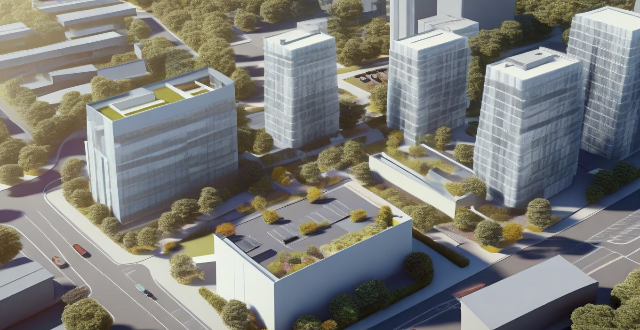
What is the relationship between energy-efficient buildings and indoor air quality ?
This article explores the relationship between energy-efficient buildings and indoor air quality, highlighting both positive and negative interactions. It defines energy efficiency and indoor air quality, outlines strategies for improving air quality in energy-efficient buildings, and concludes that it is possible to achieve both goals through careful design and maintenance practices.
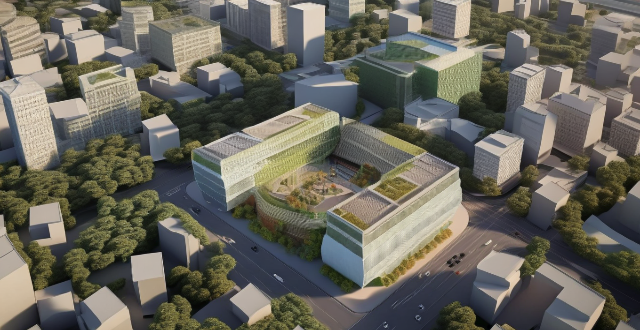
How do energy-efficient buildings contribute to reducing carbon emissions in the construction sector ?
Energy-efficient buildings are crucial in the construction sector for reducing carbon emissions, which contribute significantly to global warming and climate change. The importance of urgent action is emphasized by the IPCC's warning about the limited timeframe to limit global warming to 1.5°C above pre-industrial levels. Energy-efficient buildings can reduce energy consumption, lower energy bills, improve comfort and health, and contribute to long-term sustainability. Strategies for achieving energy efficiency include passive design strategies, high-performance building envelopes, advanced HVAC systems, retrofitting existing buildings with energy audits and renewable energy sources. Collective action from various stakeholders is necessary to make significant progress towards a sustainable future.

What are the key factors to consider when planning an energy-efficient building project ?
The text provides a summary of key factors that should be considered when planning an energy-efficient building project. These factors include site selection and orientation, building design and construction, and energy sources and consumption. The location and orientation of the building on the site can have a significant impact on its energy efficiency, as well as the design and construction of the building itself. Consideration should also be given to the sources of energy used by the building and how that energy is consumed. By considering these key factors during the planning stages of an energy-efficient building project, it is possible to create a building that is comfortable, functional, environmentally responsible, and economically sustainable over its lifetime.

How long does it take for an energy-efficient lighting system to pay for itself ?
The article discusses the financial benefits of investing in energy-efficient lighting systems and how long it takes for such an investment to pay off. It highlights that the payback period depends on several factors, including the cost of the system, energy savings achieved, usage patterns, and electricity rates. The article provides a step-by-step guide to calculate the payback period and offers an example calculation. Overall, the article emphasizes the long-term financial advantages of adopting energy-efficient lighting solutions.

How do energy-efficient lighting systems compare to traditional lighting systems in terms of performance and quality ?
Energy-efficient lighting systems outperform traditional lighting in luminous efficacy, lifespan, and color rendering index. They often offer dimming capabilities and instant on/off features. In terms of quality, energy-efficient options are more environmentally friendly, cost-effective over time, maintain consistent light quality, generate less heat, and provide a wider range of design options. Overall, energy-efficient lighting offers superior performance and quality compared to traditional systems.

What technologies are being developed to help reduce carbon footprint ?
The text discusses various technologies being developed to help reduce carbon footprint, including renewable energy sources such as solar, wind, hydro, and geothermal power; electric vehicles (EVs) with improving battery technology and charging infrastructure; energy efficiency through building design, appliance efficiency, and smart grids; carbon capture and storage (CCS); and nuclear power. These technologies aim to combat climate change by reducing greenhouse gas emissions and promoting sustainable practices.
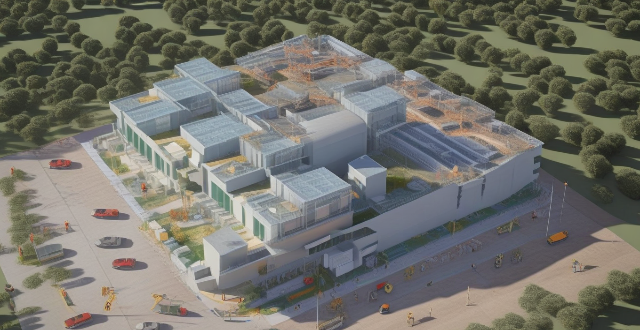
How can existing buildings be retrofitted for energy efficiency ?
Retrofitting existing buildings for energy efficiency involves several strategies, including conducting an energy audit, upgrading insulation, installing energy-efficient windows and lighting systems, optimizing HVAC systems, using energy-efficient appliances, implementing water-saving measures, sealing air leaks, investing in renewable energy sources, and encouraging energy-conscious behavior. These steps can lead to cost savings, increased comfort, and reduced environmental impact.
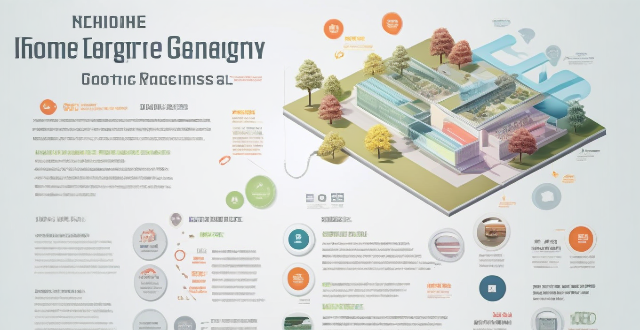
How does a home energy audit help in saving on electricity ?
A home energy audit helps identify inefficiencies and suggests upgrades, leading to electricity savings. It includes checks on insulation, air leakage, ductwork, appliance efficiency, and lighting systems. It also promotes behavioral changes and renewable energy options, providing a prioritized plan for improvements along with information on financial incentives.
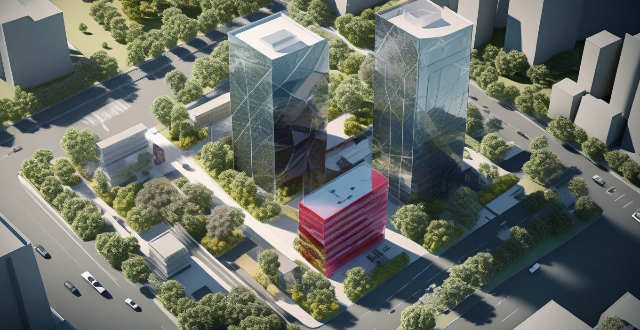
How will technology impact the design and functionality of future cities ?
Technology will have a significant impact on future city design and functionality, including the creation of energy-efficient and sustainable smart buildings, the adoption of autonomous vehicles to reduce congestion and redesign infrastructure, and the use of connectivity and data analytics for real-time information sharing and predictive maintenance. These changes will lead to more efficient, sustainable, and connected communities, but it is important to consider the long-term implications and work towards creating livable and equitable cities for all residents.
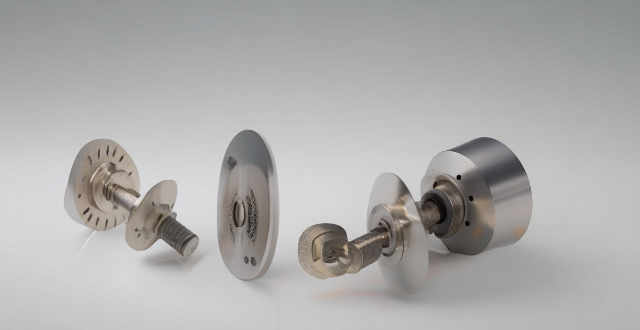
In which industries are permanent magnet motors most commonly used ?
Permanent magnet motors are utilized across a wide range of industries due to their efficiency and reliability. Key sectors include the automotive industry, where they power electric and hybrid vehicles and are used in automated manufacturing. In aerospace and defense, PM motors are crucial for aircraft systems and military applications. Appliance manufacturing benefits from PM motors in household and commercial equipment. The medical sector employs them in imaging equipment and surgical tools. Manufacturing and process control use PM motors in CNC machinery and pumps/valves. Renewable energy sectors such as wind turbines and solar tracking systems also rely on these motors. Consumer electronics, including audio and visual equipment as well as toys and hobbyist products, make use of permanent magnet motors for various functions.

How can I simplify my grocery shopping process to save time in the kitchen ?
Simplifying the grocery shopping process can save time in the kitchen. Planning ahead, creating a meal plan and categorized shopping list, using technology, choosing efficient shopping strategies, and streamlining meal preparation with batch cooking and simple recipes can all contribute to a more efficient and enjoyable cooking experience.

How can I ensure electrical safety in my home ?
Electrical safety is crucial for maintaining a secure home environment. Hire licensed electricians, schedule inspections, keep appliances clean, avoid overloading outlets, be cautious around water, childproof your home, use proper lighting, keep flammable materials away from electrical appliances, and know how to shut off power in emergencies.

How can governments promote energy efficiency through policies and incentives ?
Energy efficiency is crucial for sustainable development, and governments can drive it through various policies and incentives. Implementing energy efficiency standards like MEPS and labeling programs, providing financial incentives such as tax credits and grants, enforcing regulatory measures including energy audits and carbon pricing, enhancing public awareness and education, supporting R&D, and fostering international cooperation are effective strategies. These measures can lead to a more sustainable future with reduced environmental impact and increased economic benefits.